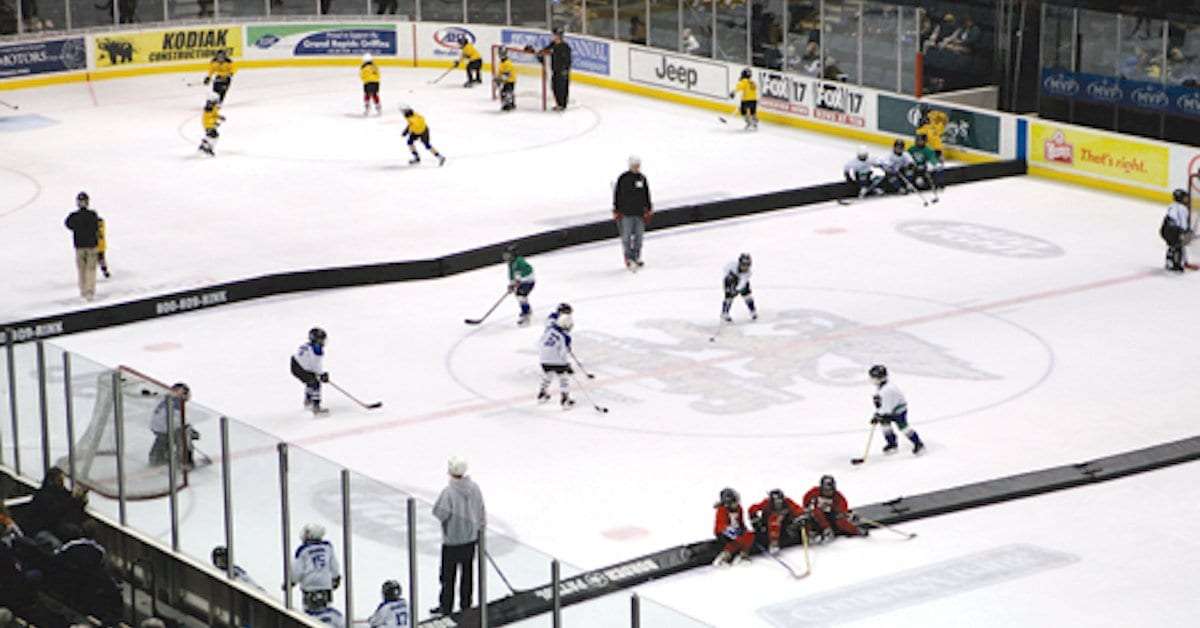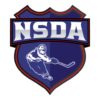Have you tried looking into youth hockey tournaments in another country only to find that they use different terms for their age groups? We have broken down the age groups for minor hockey among the leading hockey nations to quickly reference what level your players equate to in other countries.
Initiation/Tyke/Mite (5-6 years old), Novice/Mite (7-8 years old), Atom/Squirt (9-10 years old), Peewee (11-12 years old), Bantam (13-14 years old), Midget (15-17 years old), Juvenile (18-20 years old).
| Birth Year | Canada | United States | Finland | France | Germany | Sweden | Switzerland |
| 2018 and earlier | U7 (Formerly IP) | 6 & Under (Formerly Mite) | U9 | Moustiques | Bambini | U9 | U9 |
| 2017 | U8 (Formerly Minor Novice) | 8 & Under (Formerly Mite) | U9 | Moustiques | Bambini | U9 | U9 |
| 2016 | U9 (Formerly Major Novice) | 8 & Under (Formerly Mite) | U9 | Moustiques | Bambini | U9 | U9 |
| 2015 | U10 (Formerly Minor Atom) | 10 & Under (Formerly Squirt) | U10 | Moustiques | Bambini | U9 | U9 |
| 2014 | U11 (Formerly Major Atom) | 10 & Under (Formerly Squirt) | U11 | Poussins | Kleinschüler | U10 | U11 |
| 2013 | U12 (Formerly Minor Peewee) | 12 & Under (Formerly Peewee) | U12 | Poussins | Kleinschüler | U11 | U11 |
| 2012 | U13 (Formerly Major Peewee) | 12 & Under (Formerly Peewee) | U13 | Benjamins | Knaben | U12 | U13 |
| 2011 | U14 (Formerly Minor Bantam) | 14 & Under (Formerly Bantam) | U14 | Benjamins | Knaben | U13 | U13 |
| 2010 | U15 (Formerly Major Bantam) | 14 & Under (Formerly Bantam) | U15 | Minimes | Schüler | U14 | U15 |
| 2009 | U16 (Formerly Minor Midget) | 16 & Under (Formerly Midget) | U16 | Minimes | Schüler | U15 | U15 |
| 2008 | U18 (Formerly Major Midget) | 16 & Under (Formerly Midget) | U17 | Cadets | Jugend | U16 | U17 |
| 2007 | U18 (Formerly Major Midget) | 18 & Under (Formerly Midget) | U18 | Cadets | Jugend | J18 | U17 |
| 2006 | U21 (Formerly Juvenile) | 18 & Under (Formerly Midget) | U19 | Espoirs | Junioren | J20 | U20 |
| 2005 | U21 (Formerly Juvenile) | Senior | U20 | Espoirs | Junioren | J20 | U20 |
| 2004 | U21 (Formerly Juvenile) | Senior | U22 | Senior | Senior | J20 | U20 |
| 2003 | Senior | Senior | U22 | Senior | Senior | Senior | Senior |
| 2002 and older | Senior | Senior | Senior | Senior | Senior | Senior | Senior |
Minor Hockey in Canada
The names of the age groups for minor hockey in Canada vary slightly by Province, but all age groups are based on the Hockey Canada guidelines. Furthermore, these age groups are also split into Competitive and Non-Competitive divisions.
Competitive Designations
- AAA – The highest tier of competitive minor hockey
- AA
- A
- B/Minor Development ‘MD’/Additional Entry ‘AE’
- C
Most associations have teams at multiple levels in each age group depending on the number of players in their association. Players are assigned to an association based on where they live. Larger cities may have multiple associations, which creates boundaries to break up the city, trying to provide a relatively equal amount of players for each association to draw from.
Associations hold tryouts to select their teams from the pool of players available within their boundaries. Some associations choose to hold Spring tryouts shortly after the previous season has finished so the players are still in “hockey mode”. On the other hand, some associations choose to have Fall tryouts to allow players to grow over the summer.
Some associations have rules in place that in order to try out for a lower level you must start by trying out for the highest level that the association offers. This prevents the “stacking” of teams at a lower level.
Non-Competitive Hockey
House League – All players face teams within their own association. Players are evaluated at the beginning of the season and distributed onto teams (often named by the colour of the teams’ jerseys, or the Coach’s last name) by the association, trying to have an equal amount of talent on each team. There is no bodychecking allowed in house league hockey at any age level.
Local League – In areas with a lot of small towns, recreational hockey is called Local League, as they do not have enough players to create an entire league of their own. These teams are usually within an hour’s drive of each other.
Select Hockey – Some associations have Select teams which are made up of the “best” House/Local League players. These players play on the Select team as well as their House/Local League team, playing in additional games and tournaments against other centres’ Select teams.
Body Checking Age Groups
A body check can be defined as body contact primarily caused by the movement of the checker. The checker uses their body for the purpose of stopping the attacking progress of the puck carrier and/or to separate the carrier from the puck. While positioning, angling, stick-checking and body contact are taught in the younger age divisions, full body-checking is not permitted until U15 at most intermediate and competitive levels. Some community (house) leagues will offer a non-body-checking option for all age divisions, including U15 and U18. You can view our in-depth video on body checking here.
Female Hockey in Canada
In Canada, the age groups are the same for both male and female hockey.
- AA – The highest level of female minor hockey
- A
- BB
- B
- C
Girls are also allowed to play with the boys if they choose to. Oftentimes girls will play with the boys up until puberty, or it becomes contact hockey (body checking allowed), depending on the female player’s preference.
Minor Hockey In the United States
Skill Levels
- AAA/Tier 1 – The highest level of Competitive “Club” hockey
- AA/Tier 2
- A/Tier 3
- Development/Recreational – also called B/C, and includes House League/Select
At the High School levels, teams are offered at the Junior Varsity (A), or Varsity (AA/AAA) levels.
Female Hockey
The age groups for Female Hockey under the USA Hockey guidelines are:
- 10U (10 and under)
- 12U (12 and under)
- 14U (14 and under)
- 16U (16 and under)
- 19U (19 and under)
Cross Ice Hockey
U7 hockey in Canada and U8 hockey in the United States (and some U10 programs) run under the cross-ice hockey model to introduce young players to the fundamentals of the game. Cross-ice hockey reduces the size of the ice relative to the size of the players, which allows players to stay more involved in the play and provides players more opportunities to touch the puck which helps improve skills faster. Cross-ice also reduces ice costs for parents, as more teams share the ice at once, which helps more players be able to play the game.

Benefits Of Cross-Ice Hockey At A Young Age


Want to connect and share ideas with other hockey coaches from around the world? Join our Minor Hockey Coaches Group on Facebook, which has coaches from Canada, the United States, Europe, and even Australia.
Looking for help to practice more of your skills? Check out the rest of our videos here.
